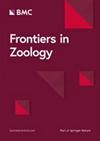为非模式生物和新兴模式生物建立基因组测序和组装系统:简要指南
IF 2.6
2区 生物学
Q1 ZOOLOGY
引用次数: 0
摘要
参考基因组组装是全面基因组分析和比较的基础。由于测序成本的下降和计算能力的提高,基因组计划现在在较小的实验室中是可行的。非模式生物或新兴模式生物的从头基因组测序需要基因组大小的知识和提取高分子量DNA的技术。除了质量之外,从单个个体中获得的DNA数量至关重要,尤其是在处理小型生物体时。虽然长读测序技术是创建高质量基因组组装的首选方法,但纯短读组装可能包含基因组的大部分编码部分,但通常更碎片化,不能很好地解决重复元件或结构变异。一些基因组计划产生了越来越多的非模式生物基因组,并为基因组测序和组装标准提供了规则。然而,有时选择的有机体不是这种倡议的一部分,或者不符合其标准。因此,如果科学问题可以用基因间部分低邻接性的基因组来回答,那么缺少染色体规模组装的高标准不应该妨碍发表。本文介绍了如何在实验室中建立一个动物基因组测序项目,如何估算成本和资源,以及如何处理次优条件。因此,我们的目标是提出基因组测序的最佳策略,以满足特定研究问题的需求,例如“基于全基因组,物种是如何相互关联的?”(系统基因组学),“一个物种内种群的基因组有何不同?”(种群基因组学),“种群之间的差异与保护有关吗?”(保护基因组学),“哪种选择压力作用于某些基因?”(选择下的基因鉴定),“重复序列最近是扩大还是缩小?”(重复动态)。本文章由计算机程序翻译,如有差异,请以英文原文为准。
Establishing genome sequencing and assembly for non-model and emerging model organisms: a brief guide
Reference genome assemblies are the basis for comprehensive genomic analyses and comparisons. Due to declining sequencing costs and growing computational power, genome projects are now feasible in smaller labs. De novo genome sequencing for non-model or emerging model organisms requires knowledge about genome size and techniques for extracting high molecular weight DNA. Next to quality, the amount of DNA obtained from single individuals is crucial, especially, when dealing with small organisms. While long-read sequencing technologies are the methods of choice for creating high quality genome assemblies, pure short-read assemblies might bear most of the coding parts of a genome but are usually much more fragmented and do not well resolve repeat elements or structural variants. Several genome initiatives produce more and more non-model organism genomes and provide rules for standards in genome sequencing and assembly. However, sometimes the organism of choice is not part of such an initiative or does not meet its standards. Therefore, if the scientific question can be answered with a genome of low contiguity in intergenic parts, missing the high standards of chromosome scale assembly should not prevent publication. This review describes how to set up an animal genome sequencing project in the lab, how to estimate costs and resources, and how to deal with suboptimal conditions. Thus, we aim to suggest optimal strategies for genome sequencing that fulfil the needs according to specific research questions, e.g. “How are species related to each other based on whole genomes?” (phylogenomics), “How do genomes of populations within a species differ?” (population genomics), “Are differences between populations relevant for conservation?” (conservation genomics), “Which selection pressure is acting on certain genes?” (identification of genes under selection), “Did repeats expand or contract recently?” (repeat dynamics).
求助全文
通过发布文献求助,成功后即可免费获取论文全文。
去求助
来源期刊

Frontiers in Zoology
ZOOLOGY-
CiteScore
4.90
自引率
0.00%
发文量
29
审稿时长
>12 weeks
期刊介绍:
Frontiers in Zoology is an open access, peer-reviewed online journal publishing high quality research articles and reviews on all aspects of animal life.
As a biological discipline, zoology has one of the longest histories. Today it occasionally appears as though, due to the rapid expansion of life sciences, zoology has been replaced by more or less independent sub-disciplines amongst which exchange is often sparse. However, the recent advance of molecular methodology into "classical" fields of biology, and the development of theories that can explain phenomena on different levels of organisation, has led to a re-integration of zoological disciplines promoting a broader than usual approach to zoological questions. Zoology has re-emerged as an integrative discipline encompassing the most diverse aspects of animal life, from the level of the gene to the level of the ecosystem.
Frontiers in Zoology is the first open access journal focusing on zoology as a whole. It aims to represent and re-unite the various disciplines that look at animal life from different perspectives and at providing the basis for a comprehensive understanding of zoological phenomena on all levels of analysis. Frontiers in Zoology provides a unique opportunity to publish high quality research and reviews on zoological issues that will be internationally accessible to any reader at no cost.
The journal was initiated and is supported by the Deutsche Zoologische Gesellschaft, one of the largest national zoological societies with more than a century-long tradition in promoting high-level zoological research.
 求助内容:
求助内容: 应助结果提醒方式:
应助结果提醒方式:


